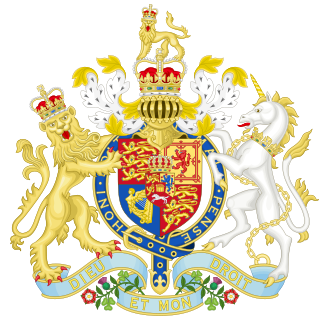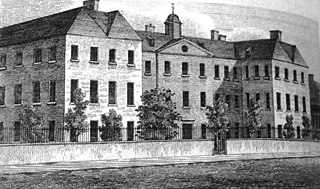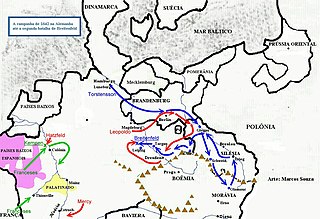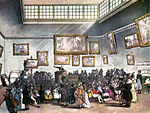
The English Poor Laws were a system of poor relief in England and Wales that developed out of the codification of late-medieval and Tudor-era laws in 1587–1598. The system continued until the modern welfare state emerged in the late 1940s.

In Britain and Ireland, a workhouse was an institution where those unable to support themselves financially were offered accommodation and employment. In Scotland, they were usually known as poorhouses. The earliest known use of the term workhouse is from 1631, in an account by the mayor of Abingdon reporting that "we have erected wthn [sic] our borough a workhouse to set poorer people to work".

The Poor Law Amendment Act 1834 (PLAA) known widely as the New Poor Law, was an Act of the Parliament of the United Kingdom passed by the Whig government of Earl Grey denying the right of the poor to subsistence. It completely replaced earlier legislation based on the Poor Relief Act 1601 and attempted to fundamentally change the poverty relief system in England and Wales. It resulted from the 1832 Royal Commission into the Operation of the Poor Laws, which included Edwin Chadwick, John Bird Sumner and Nassau William Senior. Chadwick was dissatisfied with the law that resulted from his report. The Act was passed two years after the Representation of the People Act 1832 which extended the franchise to middle-class men. Some historians have argued that this was a major factor in the PLAA being passed.
Social welfare in Sweden is made up of several organizations and systems dealing with welfare. It is mostly funded by taxes, and executed by the public sector on all levels of government as well as private organizations. It can be separated into three parts falling under three different ministries. Social welfare is the responsibility of the Ministry of Health and Social Affairs. Education is the responsibility of the Ministry of Education and Research. The labour market is the responsibility of the Ministry of Employment.

The Andover workhouse scandal of the mid-1840s exposed serious defects in the administration of the English 'New Poor Law'. It led to significant changes in its central supervision and to increased parliamentary scrutiny. The scandal began with the revelation in August 1845 that inmates of the workhouse in Andover, Hampshire, England were driven by hunger to eat the marrow and gristle from bones which they were to crush to make fertilizer. The inmates' rations set by the local Poor Law guardians were less than the subsistence diet decreed by the central Poor Law Commission (PLC), and the master of the workhouse was diverting some of the funds, or the rations, for private gain. The guardians were loath to lose the services of the master, despite this and despite allegations of the master's drunkenness on duty and sexual abuse of female inmates. The commission eventually exercised its power to order dismissal of the master, after ordering two enquiries by an assistant-commissioner subject to a conflict of interest; the conduct of the second led to more public inquiry and drew criticism.

The Poor Relief Act 1601 was an Act of the Parliament of England. The Act for the Relief of the Poor 1601, popularly known as the Elizabethan Poor Law, the "43rd Elizabeth", or the "Old Poor Law", was passed in 1601 and created a poor law system for England and Wales.

In English and British history, poor relief refers to government and ecclesiastical action to relieve poverty. Over the centuries, various authorities have needed to decide whose poverty deserves relief and also who should bear the cost of helping the poor. Alongside ever-changing attitudes towards poverty, many methods have been attempted to answer these questions. Since the early 16th century legislation on poverty enacted by the Parliament of England, poor relief has developed from being little more than a systematic means of punishment into a complex system of government-funded support and protection, especially following the creation in the 1940s of the welfare state.
From the reign of Elizabeth I until the passage of the Poor Law Amendment Act 1834 relief of the poor in England was administered on the basis of a Poor Relief Act 1601. From the start of the nineteenth century the basic concept of providing poor relief was criticised as misguided by leading political economists and in southern agricultural counties the burden of poor-rates was felt to be excessive (especially where poor-rates were used to supplement low wages. Opposition to the Elizabethan Poor Law led to a Royal Commission on poor relief, which recommended that poor relief could not in the short term be abolished; however it should be curtailed, and administered on such terms that none but the desperate would claim it. Relief should only be administered in workhouses, whose inhabitants were to be confined, 'classified' and segregated. The Poor Law Amendment Act 1834 allowed these changes to be implemented by a Poor Law Commission largely unaccountable to Parliament. The act was passed by large majorities in Parliament, but the regime it was intended to bring about was denounced by its critics as un-Christian, un-English, unconstitutional, and impracticable for the great manufacturing districts of Northern England. The Act itself did not introduce the regime, but introduced a framework by which it might easily be brought in.
Poor Law policy after the New Poor Law concerns the time period c. 1847–1900 after the implementation of the Poor Law Amendment Act until the beginnings of the decline of the Poor Law system at the start of the 20th century.

The Swedish Alliance Mission, SAM, is a Christian denomination in Sweden, mainly based in the town of Jönköping. Its roots are in the 19th-century nyevangelism revival.

The Scottish poorhouse, occasionally referred to as a workhouse, provided accommodation for the destitute and poor in Scotland. The term poorhouse was almost invariably used to describe the institutions in that country, as unlike the regime in their workhouse counterparts in neighbouring England and Wales, residents were not usually required to labour in return for their upkeep.

Events from the year 1918 in Sweden

Events from the year 1642 in Sweden

A backstuga is a Swedish language judicial term, previously used in Finland and Sweden, for a kind of rural cottage.
Rotegång or kringgång was a historical form of care for the poor in the history of Sweden to support the very poorest in the peasant community.
Beggar regulation of 1642 was a Swedish Poor Law which organized the public Poor relief in the Sweden. The regulations of the law, with some alterations, was in effect until the Poor relief regulation of 1847
The Poor relief regulation of 1847 was a Swedish Poor Law which organized the public poor relief system in Sweden. With some alterations in 1853 and 1871, it established the basis for the poor relief system until the Poor Care Law of 1918 was passed.

Child auction was a historical practice in Sweden and Finland during the 19th and early 20th centuries, in which orphan and poor children were boarded out in auctions. The name auction, however, does not refer to actual slave auctions, as the children in these auctions were never actually bought in a legal sense, but the name has become the common name for the practice.
Poor Relief Regulation of 1871 was a Swedish Poor Law which organized the public Poor relief in the Sweden. It replaced the 1847 års fattigvårdförordning and was in effect until the Poor Care Law of 1918.
Poor Care Law of 1918 was a Swedish Poor Law which organized the public Poor relief in the Sweden. It replaced the 1871 års fattigvårdförordning and was in effect until the modern Social Help Law of 1952.











